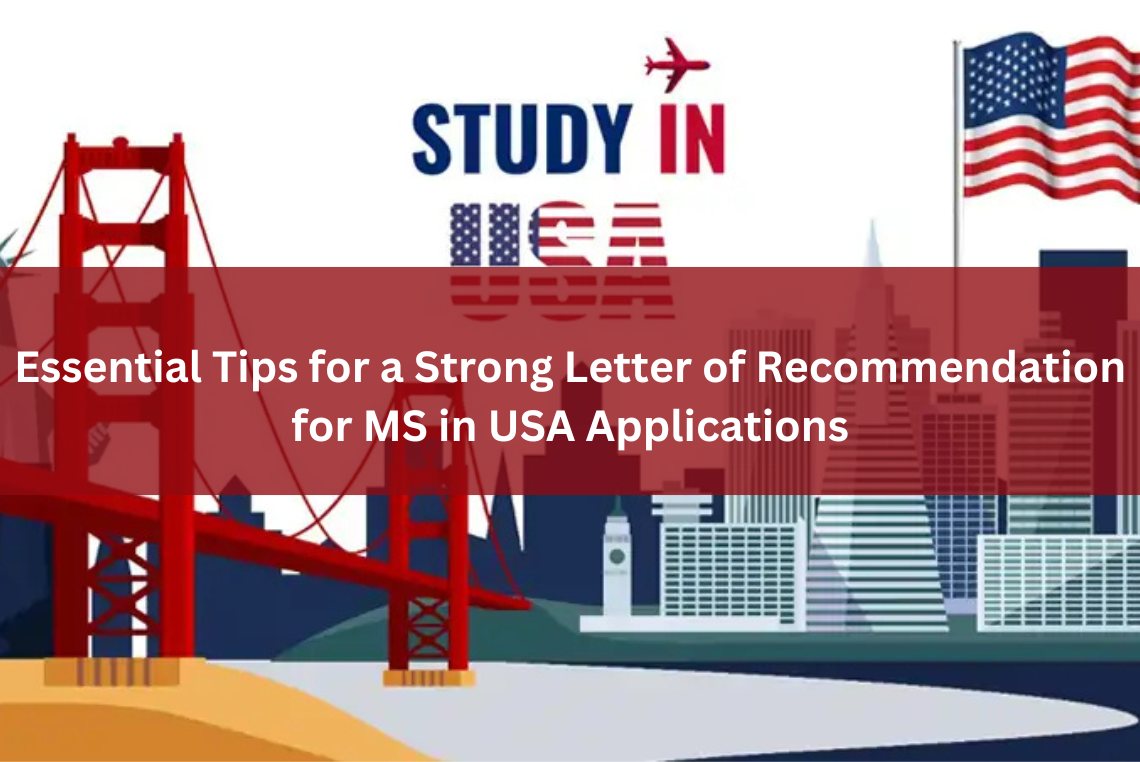What is a Letter of Recommendation for Masters in the USA?
A Letter of Recommendation (LOR) for MS in the USA is a document written by a professor, employer, or other professional who can vouch for your academic abilities, skills, and character. It provides insights into your qualifications, experiences, and potential, supplementing your application for a master’s program. LORs are a crucial component of the admissions process, helping universities assess your suitability for their programs by offering a third-party perspective.
How to Write LOR for MS in the USA?
Writing a Letter of Recommendation for MS involves the following key steps:
- Understand the Purpose:
- Recognize that a LOR should highlight the applicant’s strengths, achievements, and suitability for the program.
- Tailor it to the specific master’s program the student is applying to.
- Introduce the Recommender:
- Begin with the recommender’s name, title, and their relationship with the applicant.
- Establish credibility by briefly mentioning their qualifications and role.
- Describe the Applicant’s Strengths:
- Focus on specific achievements, skills, and qualities relevant to the program.
- Use examples such as projects, research, or leadership roles to substantiate claims.
- Address Key Skills:
- Highlight skills like critical thinking, teamwork, communication, and technical abilities.
- Emphasize traits that align with the program’s focus areas.
- Provide a Strong Conclusion:
- Summarize the applicant’s potential and endorse them enthusiastically.
- Offer to provide further information if required.
What is the Structure / Format of LOR for a Master's in the USA?
The structure of a Letter of Recommendation for Masters typically follows this format:
- Header:
- Include the recommender’s name, title, institution, and contact information.
- Add the date of writing.
- Introduction:
- State the purpose of the letter.
- Mention the recommender’s relationship with the applicant.
- Body Paragraphs:
- Paragraph 1: Highlight academic or professional achievements.
- Paragraph 2: Discuss skills, qualities, and experiences that make the applicant suitable for the program.
- Paragraph 3: Share specific examples or anecdotes that illustrate the applicant’s capabilities.
- Conclusion:
- Summarize the applicant’s strengths and express confidence in their abilities.
- Offer to provide additional details if needed.
- Signature:
- Include the recommender’s full name, title, and official designation.
Tips for Writing a Letter of Recommendation for MS in the USA
- Be Specific and Honest:
- Provide concrete examples rather than generic statements.
- Avoid exaggeration and focus on genuine achievements.
- Customize the Content:
- Tailor the LOR to the specific master’s program.
- Highlight qualities that align with the program’s goals.
- Use Professional Language:
- Maintain a formal tone throughout the letter.
- Avoid slang, casual expressions, or overly complex language.
- Stick to the Recommended Length:
- Keep the LOR concise, ideally around 500-700 words.
- Proofread Thoroughly:
- Check for grammatical errors and typos.
- Ensure the information provided is accurate and well-organized.
FAQs
1. How many LORs are required for MS in the USA?
Most universities in the USA require two to three letters of recommendation for a master’s program.
2. What is the ideal word count for LOR for US universities?
The ideal word count for a Letter of Recommendation for MS is typically 500 to 700 words.
3. How should I begin a LOR for MS?
Start by introducing the recommender, their relationship with the applicant, and the purpose of the letter. For example: “It is my pleasure to recommend [Applicant’s Name] for the Master’s program at [University Name].”
4. Do universities in the USA verify recommendation letters?
Yes, universities often verify LORs by contacting the recommender directly or using verification software to check authenticity.
5. Does a letter of recommendation increase acceptance chances?
A well-written Letter of Recommendation can significantly enhance an applicant’s chances of acceptance by showcasing their qualifications and suitability through a credible third-party endorsement.

